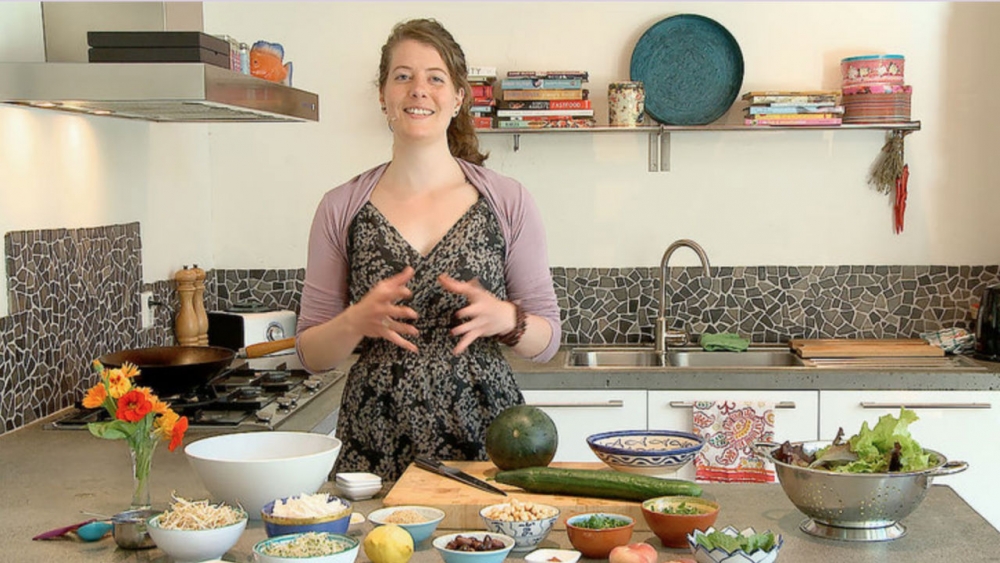Ayurveda is yoga’s sister science. It is a system of medicine based on bringing balance to the body and mind. It has a focus on prevention and tailoring healthy diet and lifestyle choices for the individual. The word comes from:
Ayur – life / long life Veda – knowledge
In Irina Verwer’s program of classes she takes us through how we can use the principles of Ayurveda in our diet to bring health, wellness and balance. In her first class Irina introduces the Five Elements of Ayurveda, which are present in everything and everyone.
1. Akash or Ether / Space
This is the most spacious element. Ether makes up the still spaces both in and around you.
2. Vayu or Air
This is also very spacious but unlike Ether, it is not still. Vayu is our breath, our heartbeat, our thoughts.
3. Tajas or Fire
Fire has transformational power. This element is all about digestion of food and thoughts. It is also our willpower and our drive.
4. Jala or Water
Water is cool and soft but also strong. It is everything fluid in the body like saliva and blood. It is also associated with love, compassion and joy.
5. Prithvi or Earth
Earth is solid, dense, heavy and still. It makes up our teeth, bones and hair. It is also that solid and dense part of our mind – our memory.
According to Ayurveda these five elements are manifested in three different forms or types called Doshas.
- Vata – made up of air and ether
- Pitta – made up of fire and water
- Kapha – made up of earth and water
The three doshas are present in us all but we will usually have one or two that will be dominant. This gives an indication of our psychological and physiological tendencies. So for example, someone who is predominantly Vata is likely to have a fast moving mind, they are often creative and very communicative. A predominantly Kapha person is more likely to be strong and steady with a great memory.
You can read more about this and find out your own dominant dosha in Ayurveda – The Three Doshas.
These doshas can sometimes get out of balance however, this is where ill health can arise. So for example, the Vata type moves from being creative to being unable to focus or finish tasks. They may become anxious. When out of balance the Kapha type may move from steadiness to stiffness or stagnant, becoming depressed. Ayurveda aims to keep these doshas in balance by assessing a person’s dominant dosha(s) and then suggesting diet and lifestyle choices to suit the individual.
Throughout Irina’s programme, you will learn more about the three doshas and how to cook delicious meals to balance each of them.
Take a deeper dive into Ayurveda
Train with Irina on our EkhartYoga Academy

Fundamentals of Ayurveda – Learn the fundamental principles of Ayurveda and incorporate these effective self-care techniques into your life.
Ayurveda for pregnancy – Ayurvedic recommendations to support you through conception and pregnancy and help to restore you after giving birth.
For more about Ayurvedic recipes, read:
- Ayurveda-inspired, digestion boosting tea
- Sweet potato porridge for Vata dosha
- Flower power salad for Pitta dosha
- Buckwheat salad for Kapha dosha

